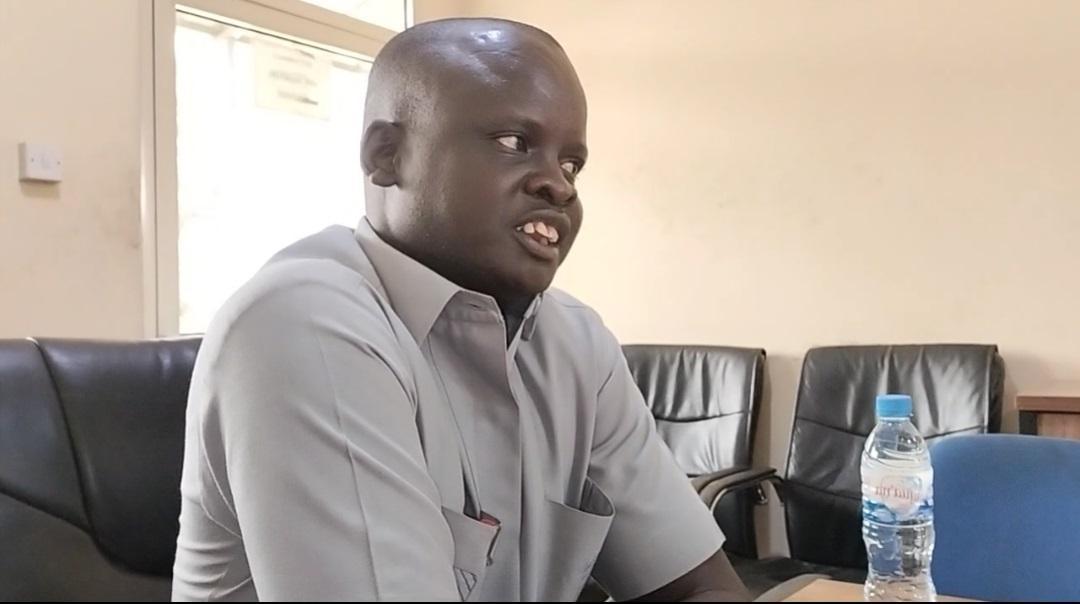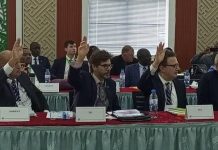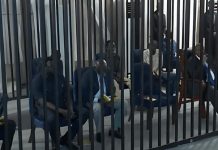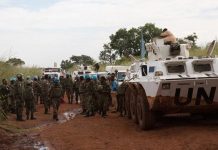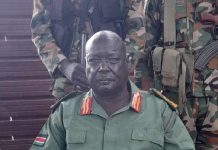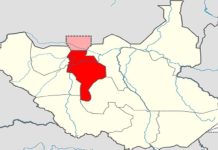Africa-Press – South-Sudan. The SPLM is not a mere name as many have understood it but it is a political, social, and economic philosophy that is a modification of the pure socialism. All South Sudanese have interest in the names, and it is the communities recognize it in their lives and own it. All those who were fighting for the liberation struggle have claim over the name SPLM it as common inheritance from liberation. The SPLMISM is the ideology behind the liberation of South Sudan, and it supports political and economic democracy. The SPLM as a name aims to implementing the ideology of the Movement through a reformist and democratic approach to achieve socio-economic and political system that is different from the Old Sudan.
The only way of resolving the SPLM problem is to either allow all South Sudanese to use it in the names of their political parties if they wish like the organization that believes in Jesus Christ uses Church in their names or creating a national SPLM heritage centre where all South Sudanese go to pay homage to the martyrs that died in liberation war. Otherwise, no serious political organization that can risk committing political suicide by leave out the name SPLM in their names.
An ideology is a system of ideas and ideals, especially one which forms the basis of economic or political theory and policy. The ideology is a set of beliefs or philosophies attributed to a person or group of persons, especially those held for reasons that are not purely epistemic in which “practical elements are as prominent as theoretical ones. The process of production of meanings, signs and values in social life. Looking at this definition, we can say that the SPLM fits in this description, and we can say it is the ideology as we shall understand more in this Discussion.
The Sudan People’s Liberation Movement and the Sudan People’s Liberation Army (the SPLM/SPLA or SPLM/A) began as the liberation Movement made up of both political and armed wings. Since its inception, the SPLM/A has been alternating between unity and breaks up into several factions whenever its leaders wanted to take a major stride towards a certain direction ideologically. The conflict within the SPLM that always involves the SPLA since 1983 up to date has been premised on ideological differences though the masses are always misinformed that a certain leader or leaders are power hungry. Ordinary South Sudanese and the armed members have been made to believe that the fight in the SPLM is always about power struggle within the Movement or within the Party.
However, critical analysis of the conflict within the SPLM that automatically involves the SPLA and now the South Sudan Defense Forces (the SSPDF) has been on the ideological differences and the failure to understand the nature of the SPLM as an Organization itself. The SPLM is not a mere name as many have understood it but it is a political, social, and economic philosophy that is a modification of the pure socialism.
All South Sudanese have interest in the names and it is the communities recognize it in their lives and own it. All those who were fighting for the liberation struggle fought have claim to it as common inheritance from liberation. The SPLMISM is the ideology behind the liberation of South Sudan and it supports political and economic democracy. The SPLM as a name aims to implementing the ideology of the Movement through a reformist and democratic approach to achieve socio-economic and political system that is different from the Old Sudan. The instances where the ideological differences became apparent in the history of South Sudanese struggle for better future and the Country are:
First, the disagreement between the remnants of the Anya Anya II with the SPLM/A was on the question whether the war would be defined as liberation for South Sudan or for the united Sudan, which was resolved by force with the defeat of the separatists though it left a trail of suffering at the South Sudan-Ethiopian Border. The Nuer Communities along the body of Ethiopia and other politicians that were deemed to be allied to the Anya Anya II remnants who objected to the New Sudan ideology paid the highest price.
Second, the 1991 war that broke out between the two leaders of the SPLM/A that later divided the SPLM/A into two factions of Nasir and Torit was on the SPLM/A had its roots in ideological differences. The leaders of the Nassir Factions were calling the end dictatorship within the SPLM/A so that the massive violation of human rights was ended and to ensure the respect of human rights, rule of law and internal democracy. Instead of addressing issues that caused the 1991 conflict peacefully or through dialogue as it was done in Rumbek in 2004, the Torit faction resorted into the use of force which became the most disastrous as it resulted into death of thousands of South Sudanese innocent people. In 1994, the demands by the Nassir factions of addressing issues of human rights violations and the need for democracy within the SPLM were addressed when the Military administration was separated from the civil administration under the New Sudan.
The need for the right to self-determination was acknowledged by Torit Faction as Late Dr. John Garang was able to openly acknowledge that Dr. Riek Machar Teny, the leader of Nasir Factor faction, was right. Late Dr. John Garang was aware that the conflict between him and Dr. Riek Machar Teny was premised on the ideological differences between two of them. Late Dr. John Garang never said that Dr. Riek Machar was wrong in his claim of weaknesses in the SPLM/A but he only blamed him on starting the conflict at the time when the SPLM/A was at the verge of winning the war against Sudan government not that he was wrong in demanding for reform of the Movement system.
Nonetheless, given the nature of the SPLM/A, which was the Military Organization and not interested in peaceful resolution of conflict, Dr. Riek Machar Teny and his colleagues were pushed into the position of self-defence. Otherwise, they were going to languish in prison or died like other commanders such as Late Benjamin Bol Akok, Late Makur Aleyou, Late Malath Lueth, Bol Akook and many others who died under the unknown circumstances for disagreeing with Garang on the mission and vision of the Movement.
As a matter of fact, the SPLM/A under Late Dr. John Garang from 1983 to 2004 did not take well all forms of constructive criticisms. Late Dr. John Garang only solved conflict after the SPLM/A going hard way or through conflicts. In other words, Late Dr. John Garang did not have a peaceful way of dealing with the concerns raised by some leaders that were fundamentally affecting the SPLM/A. One of the best attributes that Late John Garang had though he was not in favour of democracy, was the flexibility politician. He could easily realize after the conflict and address some weaknesses and bring his political opponents along if he found it more destructive to kill them than compromising. It was it later stage the SPLM/A under Late Dr. John Garang realized that for the SPLM/A to survive, dialogue and teamwork was the only way forward and the basis of the strength of the SPLM/A.
It was out of this realization Dr. Garang accepted the dialogue that saved the SPLM/A, from the destruction. Had Late Dr. John Garang resorted into using force against the Yei Faction that was majorly Bahr el Ghazal Faction headed by the current President who disagreed with the Late Dr. John Garang de Mabor based on personal differences in Yei in 2004, the SPLM/A would have completely collapsed. Fortunately, the SPLM/A Yei Dispute was amicably resolved in Rumbek in the same year, 2004. We may say that Late Dr. John Garang learned from the break-up of the SPLM/A in 1991 and he did not want to put the SPLM/A into another crisis that would have returned the conflict in Sudan to zero level with the massive loss of Southerners.
As many analyses have however shown, the main reason for the conflict of the SPLM/A in Yei being resolved amicably was because it did not have basis in the ideological differences. The Yei Conflict was just over the seat of the Deputy Chair of the SPLM/A that Garang was about to take away from Commander Salva Kiir Mayardit and allocate to another person. The conflict within the SPLM/A in Yei was therefore easier to resolved since it was not based on ideological differences and there was no fear of serious fundamental changes that would have taken place in terms of the structural in the management of the Movement. Rather, the conflict was not interfering with the status quo of Movement.
Third, after the independence in December 2013, the political struggle between President Salva Kiir and Vice President Riek Machar that was rooted on ideological differences in respect to state building resulted to deadly violence throughout the country where hundreds of thousands of people died. The violence was substantially ended with the signing of the Revitalized Agreement on the Resolution of the Conflict in South Sudan. As the conflict of South Sudan in 2013 was a result of ideological differences, the issues were later addressed in the Revitalized Agreement. The Revitalized Agreement then addresses issues of the public importance such as:
The constitutional parliamentary democracy, the system of government and electoral system; -the establishment of a permanent ethnic power sharing equation in the security sector and to ensure that the Security is professional and in accordance with the law, with clear command and structure, after the unification and regularization process; -the issue of permanent constitution;-the issue of financial sector reforms;- the issue peace, healing, transitional justice and reparation;- the issue of power sharing which is based on equal and equitable power-sharing.
In other words, there is a need for reviewing of the formula of power sharing at state and local levels as provided in the R-ARCSS, and base it on the principle of proportionality with the principle of minority veto or mutual veto, to protect ethnic minorities from disenfranchisement. The Revitalized Agreement in Article 1.4.12 provides that there should be reduction of the number of legislative positions and the size of the public service in accordance with the population data. The Revitalized Agreement further provides that there is a need for entrenching the principles of constitutionalism, rule of law, equality and justice, and establishing presidential term limits as defining features of South Sudan’s democracy.
The South Sudan Conflict of 2013 was also the result of the ideological differences or the lack of the clear ideology in South Sudan. Like the conflict of 1991 when the SPLA/M broke up, the South Sudan Conflict of 2013 was very disastrous. The war as a result of ideological differences is always destructive as it leads to fundamental change in the existing set-up of the system. The reason the SPLM is a problem of South Sudan is because it is the ideology itself though we have failed to realize this and only viewing the SPLM as a mere name.
The SPLM like Christianity or Church, which is the Christians philosophy or ideology, the SPLM is the South Sudanese ideology. The Christianity, which is a major religion stems from the life, teachings, and death of Jesus of Nazareth in the 1st century CE. The Christianity or the Church began as an association of believers in the Jewish community of Roman Palestine who were the followers of Christ, the Son of God. The Church began as the universal Church or Catholic Church with clear teachings of Jesus Christ which became party of the lives of Christians or the people of the way.
As the Church was not run by Jesus Christ but by human beings, the Catholic Church became too corrupt. Consequently, some leaders of the Catholic Church began to agitate for radical reforms within the Church but as the leaders of the Catholic Church were not tolerance and decided to summarily dismiss or excommunicated them. After they were dismissed from the Catholic Church those leaders like Martin Lurther King Sr did not go and sit idly but they broke away and formed their own Church out of the original Church of Christ. They set up their new Churches with the same set up though with some modified Catholic Church values and suffix “Church” at the end of every name of their new Churches.
Churches such as the Adventism, Anabaptism, Anglicanism, Baptists, Lutheranism, Methodism, Moravianism, Pentecostalism, Plymouth Brethren, Quakerism, Reformed, and Waldensianism etc were formed were formed with the word Church at the end of their names. Currently, there are 37 million churches in the world with 34,000 (Christian) denominations with their names ending with the word Church or Churches. The question is what the problem? Why should the breakaway group or Churches from bad original organization carry with them the name Church and the practice of Christianity with them? why?
The answer is simply Church is not the name per se but it is an ideology enshrined in the values of the Church. The Church is philosophy or ideology of Christianity that takes the followers to their destiny. The Church is the House of God or it is the way to heaven. Jesus Christ himself states that he is the way, the truth and the life. The Church is House of God and anybody who wants to go to God or Heaven, he or she must be taught the values of Christianity in the Church and baptised into the Community of God that believes in Christianity through Church.
From the above discussion, we can say that the SPLM is not just a name per se but it is ideological belief South Sudanese leaders and communities they are members directly or indirectly. When I say indirectly, I meant that some individual South Sudanese became members of the SPLM by default. The SPLM is viewed as the original ideological South Sudaneseism. Thus, those individuals who defected and joined the opposition out of impulse or out of adventure but they did not get what they wanted in an opposition, they always defect and go back to the SPLM while saying that they decided to return to the Mother Party. Some even regret and apologize for the leaving the SPLM in the first place.
The SPLM is considered by many South Sudanese as the ideological basis or mother of all other Parties. This is why those who left the SPLM and joined the Opposition are viewed as those searching for position only or are betrayers. All these show that the SPLM is more than a name. It is not just a name per se but it is an ideology as it represents the set of beliefs or philosophies of South Sudanese that they attribute to the ideas of justice, equality, respect for human dignity and advancement of human rights and fundamental freedoms. South Sudanese communities believe that the SPLM is their Movement and their social contract, which is the cornerstone of social justice equality and democracy. The SPLM according to South Sudanese is the foundation for a united, peaceful and prosperous South Sudan. This is what is summarized as one people, one nation.
The name SPLM has developed into ideological concept. No South Sudanese Political Party can attract a large number of followers unless it bears the name, the SPLM. Today the following SPLMS like Church exist: SPLM-DC (Democratic Change, 2009–present); SPLM–N (North, 2011–present); SPLM-IG (In Government, 2013–present); SPLM-IO (In-Opposition, 2013–present); SPLM-FD (Freed Detainees, 2015–present); and R-SPLM. There are some new parties formed such as the Revivalist Party which is intended to revive the SPLM. Although the SPLM as a party has not adhered to one consistent ideology since 1983 as many factions exist, it has been described as “being on the left of centre ideologically speaking with similar elements to social democracy.
As I have stated in the title to this work, the SPLM is not a mere name as many have understood it but it is a political, social, and economic philosophy that is a modification of the pure socialism. Being in some form of socialism, the SPLM or SPLMISM as the ideology behind the liberation of South Sudan supports political and economic democracy. The SPLM as a name aims to implementing the ideology of the Movement through a reformist and democratic approach to achieve socio-economic and political system that is different from the Old Sudan.
The SPLM under a social liberal framework is in practice is a social democracy that takes a form of socially managed welfare capitalism through the partial public ownership, economic interventionism from the State, and policies promoting social equality. In this way, the SPLMISM is a response to the ills of the Old Sudan as it is a commitment to developing South Sudanese version of representative and participatory democracy that was not enjoyed under the system of Old Sudan. The aims of the SPLM is the indigenous ideology developed out the existing ideologies in the world is to bring corrective social justice by curbing inequality, eliminating the oppression of underprivileged groups, eradicating poverty, and upholding universally accessible public services such as child care, education, elderly care, health care, and workers’ compensation. The ideology of the SPLMISM economically supports income redistribution and regulating the economy in the public interest as a way of correcting the ills of Sudan.
The SPLM is not a mere name as many have understood it but it is a political, social, and economic philosophy that is a modification of the pure socialism. The SPLM philosophy of taking towns to people means taking service to the people which is the summary of the policy of every political Party that must capture attention of the people. It is an ideology itself based on the traditional setting of South Sudanese. All South Sudanese have interest in the names and it is the communities recognize it in their lives and own it.
The only way of resolving the SPLM problem and the problem of South Sudan is to either: allow all South Sudanese to use it in the names of their political parties if they wish like the way Christians use the term CHURCH in their names; or, establishing the national SPLM Heritage Centre of Nationalism where all South Sudanese should go to pay homage to the martyrs that died in liberation war at the end of every year. The Parliament will then pass the law prohibiting all political parties from using the SPLM in the names of their parties. Otherwise, no serious political organization that hopes to control grassroots can risk to commit political suicide by omitting the name “SPLM” in their names.
Source: Sudans Post
For More News And Analysis About South-Sudan Follow Africa-Press

